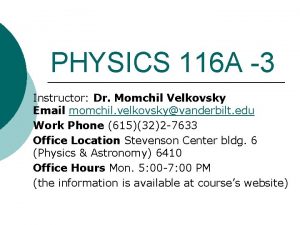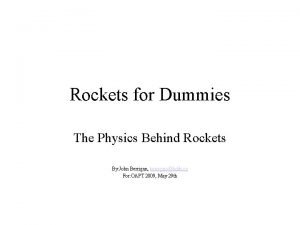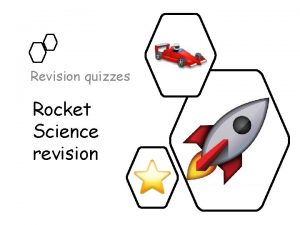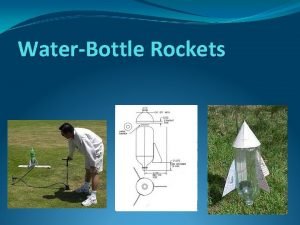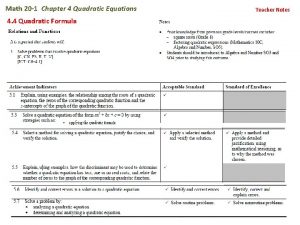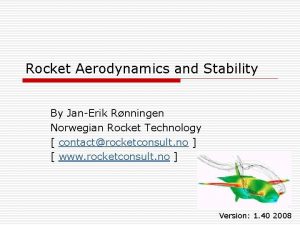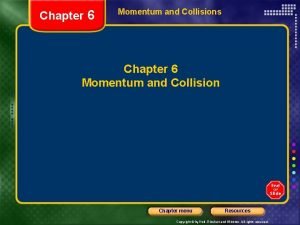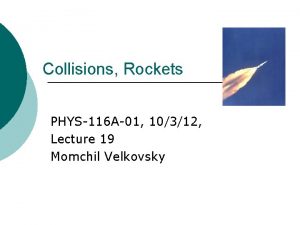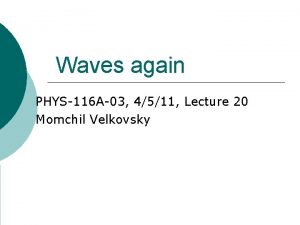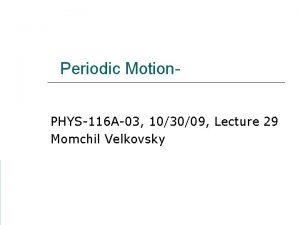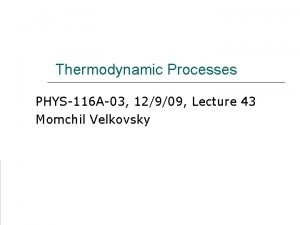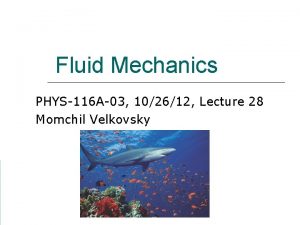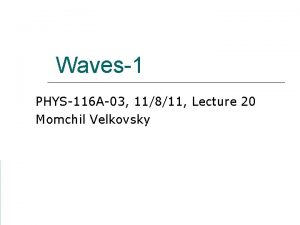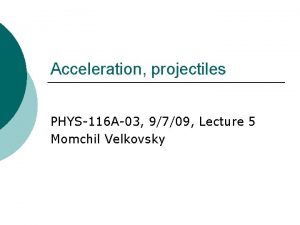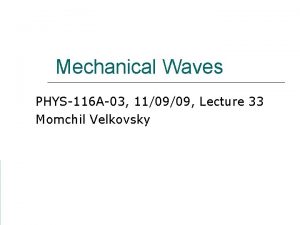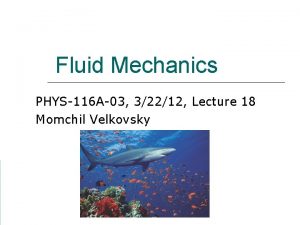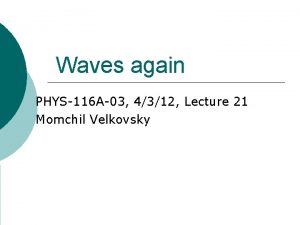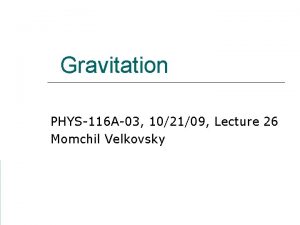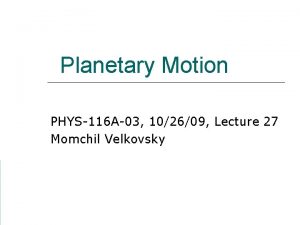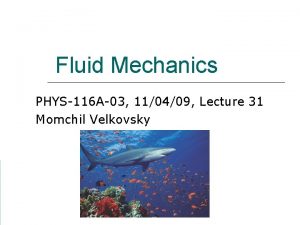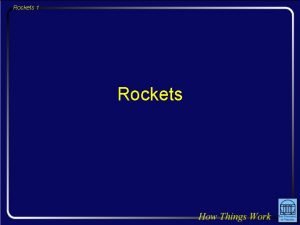Collisions Rockets PHYS116 A03 21611 Lecture 11 Momchil
















- Slides: 16

Collisions, Rockets PHYS-116 A-03, 2/16/11, Lecture 11 Momchil Velkovsky

Don’t forget that momentum is a vector!

Like energy, momentum also has conservation rules

Conservation of energy vs. conservation of momentum Kinetic Energy Momentum Mathematical object Scalar (number) Vector Change Work = Force (dot) displacement Impulse = Force times time Internal forces in a system Can do work and change the Do not change the total kinetic energy of the system momentum of the system External forces can be ignored When they are orthogonal to the displacement If a component of the NET force is 0 or small, momentum is conserved in that direction Universality It is very rare that KE is conserved, but it is transformed in other forms (potential, internal energy) You really need zero force in a given direction to have momentum conserved. If it is not, there is no “potential momentum”

Two objects with different masses collide and stick to each other. Compared to before the collision, the system of two objects after the collision has ¡ ¡ ¡ A. the same total momentum and the same total kinetic energy. B. the same total momentum but less total kinetic energy. C. less total momentum but the same total kinetic energy. D. less total momentum and less total kinetic energy. E. not enough information given to decide

Two objects with different masses collide and bounce off each other. Compared to before the collision, the system of two objects after the collision has ¡ ¡ ¡ A. the same total momentum and the same total kinetic energy. B. the same total momentum but less total kinetic energy. C. less total momentum but the same total kinetic energy. D. less total momentum and less total kinetic energy. E. the same momentum, but not enough information to decide about kinetic energy

Types of collisions Totally inelastic -bodies stick together -the maximum possible amount of kinetic energy is lost (transformed) Inelastic -some kinetic Energy is lost Elastic -kinetic energy is conserved

Totally Inelastic collisions ¡ ¡ ¡ Momentum conservation Maximum energy loss Very easy to find the final velocity in any dimensions Maximum possible energy loss!

Elastic collisions ¡ ¡ ¡ Momentum conservation Energy conservation In 1 D – enough to find the final velocities In 2 D and 3 D we need extra information In 2 D : 3 equations for 4 unknowns – we need to know the direction or the magnitude of one of the final velocities

Playing with elastic collisions in 1 D

Elastic compared to inelastic

“Lucky” Collision ? ¡ ¡ ¡ Two streets cross at an angle q. At the intersection a car with mass m 1 and speed v 1 collides with a truck with mass m 2 and speed v 2. The two vehicles bounce and the car continues along the street where the truck was going to go, and the truck continues along the street where the car was going to go. Ignoring the friction with the road, during the collision, what were the velocities of the two vehicles just after the collision? If m 2=2 m 1 and v 1=3 v 2, what percent of the initial kinetic energy of the vehicles has turned into energy of deformation and heath? y v 2’ v 2 q v 1’ x

Rockets

Rockets

Rain starts to fall vertically in a railway car that was moving with velocity v. What is going to happen with the velocity of the car? 1. 2. 3. 4. 5. It will increase, horizontal momentum is conserved It will decrease, vertical momentum is conserved It will increase, total energy is conserved It will stay the same, because vertical drops do not add to the horizontal momentum

Next Time ¡ Chapter 10
 Momchil velkovsky
Momchil velkovsky 01:640:244 lecture notes - lecture 15: plat, idah, farad
01:640:244 lecture notes - lecture 15: plat, idah, farad Thrust formula
Thrust formula Quiz
Quiz Red rockets and rainbow jelly activities
Red rockets and rainbow jelly activities Tree rockets
Tree rockets Water bottle rocket simulator
Water bottle rocket simulator Roaring rockets powerpoint
Roaring rockets powerpoint Newtons 3 rd law
Newtons 3 rd law Model rockets
Model rockets Newton's third law
Newton's third law Brief history of rockets
Brief history of rockets Johnny rockets fresno
Johnny rockets fresno Location of roots
Location of roots Equation for aerodynamic drag
Equation for aerodynamic drag Chapter 6 momentum and collisions
Chapter 6 momentum and collisions As you enter the deceleration lane or the exit ramp
As you enter the deceleration lane or the exit ramp
